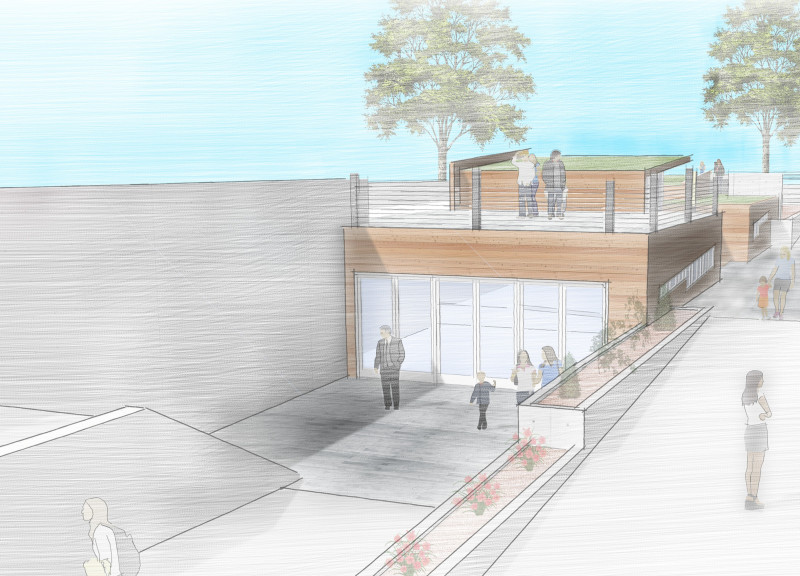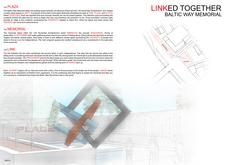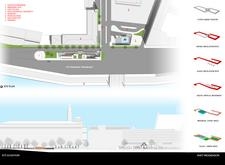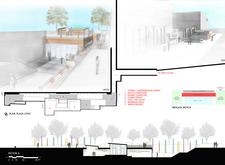5 key facts about this project
## Project Overview
The Baltic Way Memorial is situated in a pivotal location between the Museum Plaza and the 11th November Embankment. The intent of the design is to create an inclusive space that connects the historical significance of the Baltic nations' struggle for independence with contemporary societal values. The architectural language encompasses themes of unity, diversity, strength, and wholeness, resulting in a memorial that facilitates public engagement and reflection.
### Spatial Strategy
The design incorporates several key elements that encourage interaction and introspection. The central **Plaza** serves as a communal gathering area, featuring a reflective pool and landscaped greenery that promote contemplation. A prominent **Memorial**, characterized by a series of colorful pillars, symbolizes the diversity of the individuals involved in the independence movement while fostering a sense of togetherness. A dedicated **Link** pathway narrates the transition from oppression to freedom, guiding visitors through distinct spatial experiences that enrich their understanding of the historical context.
### Materiality and Design Features
A careful selection of materials enhances the memorial’s functionality and emotional resonance. Concrete is the primary material for the main structure, signifying durability and resilience. Glass elements include frosted glazing and reflective surfaces, which promote transparency and a connection to the surrounding environment. Metal framing in the pillars reinforces strength, while wood is utilized in communal spaces to create a welcoming atmosphere. LED backlighting integrated into the pillars allows for dynamic visual experiences that evolve throughout the day.
Distinct features such as an underground exhibit provide immersive interactions with the historical narrative, allowing for a juxtaposition of intimate spaces against the expansive outdoor plaza. The **Amphitheater** configuration is designed for both community events and commemorative gatherings, reinforcing the site’s role as an educational and social hub. Thoughtful landscape integration with greenery enhances ecological sensitivity and deepens visitors' connection to nature.





















































